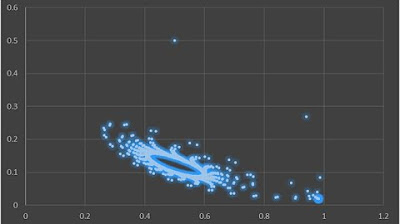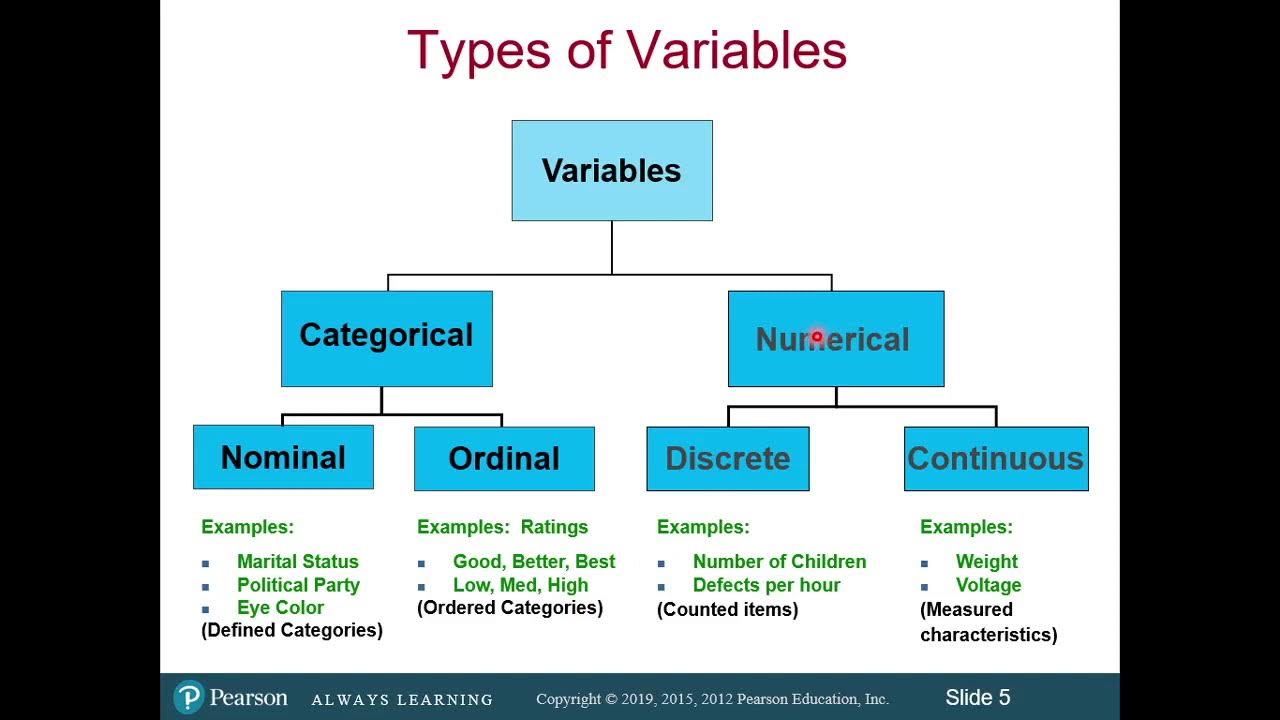The Mode – The Most Frequently Occurring Measure of Central Tendency (5-2)
TLDRThe video script delves into the concept of mode as a measure of central tendency, particularly suited for nominal data and unaffected by outliers. It contrasts unimodal and bimodal distributions, illustrating with examples like fishing peaks and overlapping IQ scores. The mode's advantage lies in its resistance to outliers, but it can be misleading if it doesn't represent the majority of data points. The script advises using the mode for nominal data, in bimodal distributions, or as an initial analysis tool for ordinal or scale variables.
Takeaways
- 📊 The mode is the score that occurs most frequently in a data set and represents the central tendency for nominal level data.
- 🔍 A unimodal distribution has one mode, indicating a single peak of frequency.
- 📈 A bimodal distribution has two modes, suggesting two distinct peaks of frequency, which can occur naturally or due to overlapping distributions.
- 🐟 An example of a natural bimodal distribution is the number of fish caught at dawn and dusk, with fewer caught at midday.
- 📚 When comparing distributions, like average IQ scores from different schools, a bimodal result may indicate the need to analyze separate groups.
- 🍦 The mode is particularly useful for nominal data, such as the most popular ice cream flavor in a survey.
- 🔢 Calculating the mode often involves arranging scores in ascending order to identify the most frequent score(s).
- 🔄 SPSS reports the smallest mode in a bimodal distribution and warns of multiple modes.
- 🚫 The mode is unaffected by outliers, which is an advantage but also a limitation as it can be misleading if the mode does not represent the majority of the data.
- 💯 The median is a more representative measure of central tendency when the mode is not indicative of the overall data distribution.
- 📝 The mode should be reported when a single score dominates the distribution, especially with nominal data or in bimodal situations where the mean or median would be unrepresentative.
- 📉 The mode is less useful when the most common score is zero, as it may not reflect the behavior of interest in the data set.
Q & A
What are the three measures of central tendency mentioned in the script?
-The three measures of central tendency mentioned are the mean, the median, and the mode.
What is the mode in statistics?
-The mode is the most frequently occurring score in a data set, representing the value with the highest frequency.
What is a unimodal distribution?
-A unimodal distribution is one that has a single most frequently occurring score, indicating there is only one major peak in the data.
What is a bimodal distribution?
-A bimodal distribution has two major peaks, meaning there are two modes, which are the two most frequently occurring scores.
Why is the mode commonly used with nominal level data?
-The mode is commonly used with nominal level data because it is effective for identifying the most popular category or the most frequently chosen option in categorical data.
What are the two reasons for a bimodal distribution according to the script?
-The two reasons for a bimodal distribution are: 1) There may genuinely be two modes in the data, such as different peaks for activities at different times of the day. 2) Two different distributions may be overlapping each other, such as comparing average scores from two distinct groups.
How does SPSS handle a bimodal distribution when calculating the mode?
-When SPSS encounters a bimodal distribution, it reports the smallest mode and gives a warning that multiple modes exist.
What is the advantage of the mode over the mean in terms of outliers?
-The mode is not susceptible to outliers at all, meaning any outlier, no matter how large, has no effect on the mode.
What is a disadvantage of the mode in terms of data representation?
-A disadvantage of the mode is that it ignores most of the data by not considering scores other than the most frequent, which can lead to a mode that is not representative of the overall data set.
When is it appropriate to report the mode instead of the mean or median?
-The mode should be reported when there is one particular score that dominates the distribution, when the data is nominal, or when the distribution is bimodal and the mean or median would be non-representative.
Why is the mode not useful when the most common score is 0?
-The mode is not useful when the most common score is 0 because it doesn't provide information about the behavior of interest, such as the number of cigars smoked in a month, where the mode of 0 would not reflect the actions of those who have smoked.
How can the mode be used as an initial approach to ordinal or scale variables in a dataset?
-The mode can be a quick and easy way to get a sense of ordinal or scale variables when first approaching a dataset, providing an initial insight into the most common values present.
Outlines
📊 Understanding Modes in Data Analysis
This paragraph introduces the concept of the mode as a measure of central tendency, which is the value that appears most frequently in a data set. It explains the distinction between unimodal and bimodal distributions, with examples like fish catching patterns and overlapping IQ score distributions. The mode is highlighted as particularly useful for nominal data, such as ice cream flavor preferences, and its calculation involves arranging data to identify the most frequent score. The paragraph also discusses the limitations of the mode, such as its insensitivity to outliers and its tendency to ignore most of the data. It concludes by advising when to use the mode, such as with nominal data or when the distribution is bimodal, and notes its advantages and disadvantages.
📘 Initial Exploration with Ordinal and Scale Variables
The second paragraph discusses the use of the mode for initial exploration of ordinal or scale variables in a dataset. It suggests that the mode can provide a quick and easy insight into the data, especially when first approaching a set. This is useful for gaining a preliminary understanding of the data distribution and identifying the most common scores or categories. The paragraph implies that while the mode may not be the final measure of central tendency for these types of data, it serves as a valuable initial tool in the analysis process.
Mindmap
Keywords
💡Mode
💡Central Tendency
💡Unimodal Distribution
💡Bimodal Distribution
💡Nominal Level Data
💡Outliers
💡Median
💡Mean
💡Nonparametric Test
💡Ordinal Data
💡Data Set
Highlights
Three measures of central tendency are discussed: mean, median, and mode.
Mode is the most frequently occurring score in a dataset.
A unimodal distribution has only one major peak, indicating one mode.
A bimodal distribution has two major peaks, suggesting two modes.
Mode is commonly used with nominal level data for the most popular category.
Bimodal distributions can occur due to two distinct peaks or overlapping distributions.
Example of a true bimodal distribution: number of fish caught at dawn and dusk.
Bimodal distribution can result from overlapping distributions, like average IQ scores from different schools.
SPSS reports the smallest mode in a bimodal distribution and warns of multiple modes.
Mode is not affected by outliers, unlike mean and median.
Mode can be misleading if it does not represent the majority of the data.
Mode is less useful when the most common score is 0, like in the case of smoking behavior.
Mode should be reported when one score dominates the distribution, especially with nominal data.
Mode is the preferred measure of central tendency for nominal level variables and nonparametric tests.
Mode can provide a quick sense of ordinal or scale variables when first exploring a dataset.
Choosing the appropriate measure of central tendency depends on the nature of the data.
Mode is the central tendency measure of choice when variables are measured at the nominal level.
Transcripts
Browse More Related Video

Mean, Median and Mode - Measures of Central Tendency

Mean, Median, Mode, and Outliers: Measures of Central Tendency

Understanding Central Tendency

Data and the frequency distribution

SPSS: Understand Ordinal, Nominal & Scale (aka Level of measurment)

Classification of Variables and Types of Measurement Scales
5.0 / 5 (0 votes)
Thanks for rating: